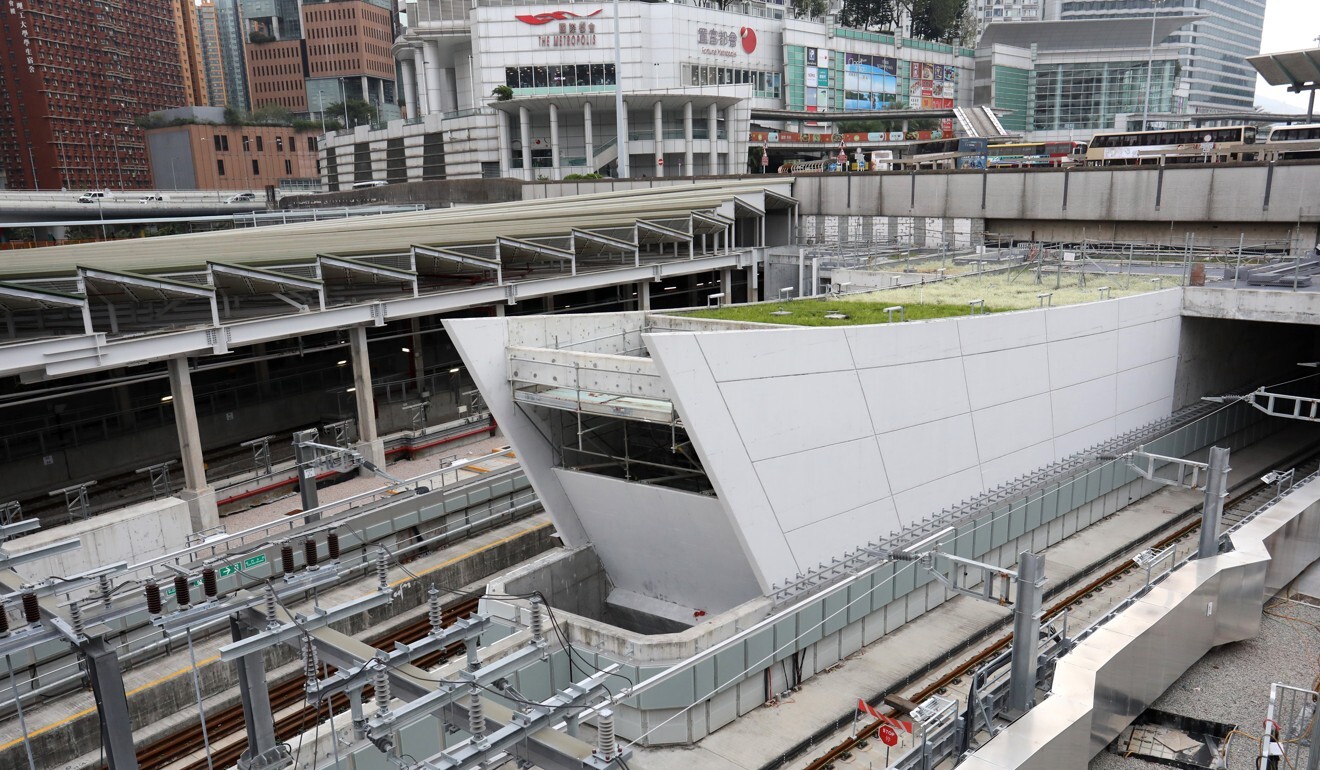
Exclusive | Hong Kong MTR shoddy-work scandal: Hung Hom station site safe, no need for demolition, inquiry panel says
- MTR Corp management, main contractor and whistle-blower lambasted, source says
- City leader Carrie Lam and Executive Council to decide this month on panel’s findings
A high-level investigation into a construction scandal at Hong Kong’s costliest rail link has concluded that the project is safe and there is no need for demolition work, the Post has learned.
The government-appointed commission of inquiry headed by former judge Michael Hartmann said in its final report that the Hung Hom station of the HK$90.7 billion (US$11.7 billion) Sha Tin-Central rail link met safety integrity standards, according to a source.

The commission submitted its report to Chief Executive Carrie Lam Cheng Yuet-ngor on March 27. The source said the report was due to go before the Executive Council on May 12 for endorsement.
The saga, which has dragged on for two years, centres on allegations of shoddy work at the Hung Hom station site. In the midst of investigations, vital documents relating to the project went missing. As the scandal unfolded, a number of senior people at rail operator the MTR Corporation resigned.
MTR reports shoddy-work findings on Sha Tin-Central Link to police
The Post was told the report lambasted three key parties – the management of the MTR Corp, the project’s main contractor Leighton Contractors (Asia) and whistle-blower Jason Poon Chuk-hung, a subcontractor.
The source did not reveal further details, but said: “The structural safety of the Hung Hom station was built to British standards, which is above par as usual practice. Even with some issues at the station, its safety integrity still meets standards.”
A government spokesman declined to comment on the report or possible follow-up action, and only said: “The government is studying the report in detail and will publish it as soon as practicable.”

The scandal erupted in May 2018 with allegations that workers had cut corners at the site of the expanded Hung Hom station. Media reports accused a contractor of using steel bars which had been cut short to appear as if they were screwed properly into couplers.
The commission of inquiry was set up in July 2018 to probe allegations of shoddy work at the station, and was originally expected to submit a final report on the safety of the station’s platform structure in February last year.
But new controversies erupted in January last year, over a large number of missing inspection documents, defective reinforcement bars, and unauthorised structural changes at three other areas of the station site.
Scandal deepens over missing papers related to MTR shoddy work allegations
City leader Lam then expanded the scope of the inquiry for the commission to investigate the latest revelations about other parts of the station.
To allay pressing safety concerns over the station platforms, the commission issued an interim report in March last year. Although it found that work was not executed according to plan, with “isolated and sporadic incidents” of bars being shortened, it concluded that the platform was safe and did not need rebuilding or strengthening.

Quentin Cheng Hin-kei, spokesman for the Public Transport Research Team, a commuter concern group, called for an overhaul of the existing mechanism to oversee project safety, saying the saga exposed the lack of checks and balances for rail safety and the government’s overreliance on the MTR Corp, the city’s sole rail operator, for supervision of rail projects.
“This incident showed that some key parties like the MTR Corp and main contractor Leighton failed to do their job properly in overseeing safety. Because of their dereliction of duty, we saw some bizarre things happening, such as the large amount of safety documents going missing,” he said.
“At the same time, the government has not deployed enough experts to monitor the MTR Corp’s management of rail projects.”
Cheng pointed out that the MTR Corp received a management fee of about HK$7.9 billion for overseeing construction of the rail link, and said: “It received such a high management fee but what has it done to fulfil its role?”
He said the current system was flawed, and the government should plug loopholes to ensure effective supervision of safety aspects of rail projects.

Following the interim report by the commission, the MTR Corp submitted two reports to the government last July, on structural safety at Hung Hom station and the safety papers which went missing.
Admitting some construction flaws, it proposed carrying out reinforcement work. It estimated that over a third of the couplers used were defective, blaming poor workmanship among likely causes.
The government approved the proposals and ordered the MTR Corp to proceed with partial opening of the rail link this year.
The first section opened in February, but another part, the Tai Wai-Hung Hom section, has been delayed. Its targeted opening was moved from December 2018 to the middle of 2019, only to be pushed back again to late 2021 because of the reinforcement work at Hung Hom station.
The opening of the cross-harbour section between Hung Hom and Admiralty has been delayed to the first quarter of 2022, after being unable to meet earlier targets.
The MTR Corp blamed the latest postponement on vandalism of another line by radical protesters during anti-government demonstrations which have gripped Hong Kong since last June.
Help us understand what you are interested in so that we can improve SCMP and provide a better experience for you. We would like to invite you to take this five-minute survey on how you engage with SCMP and the news.


